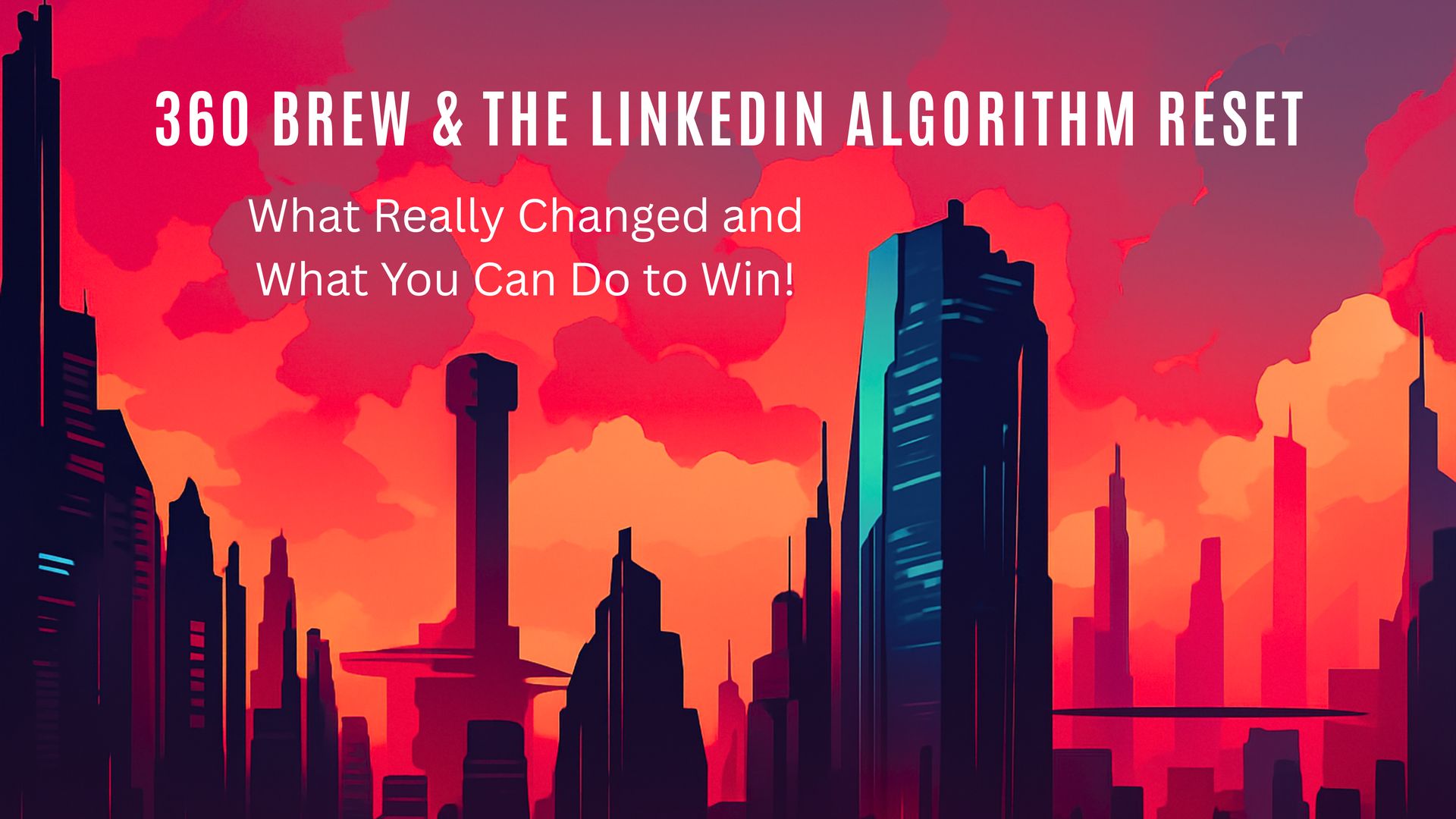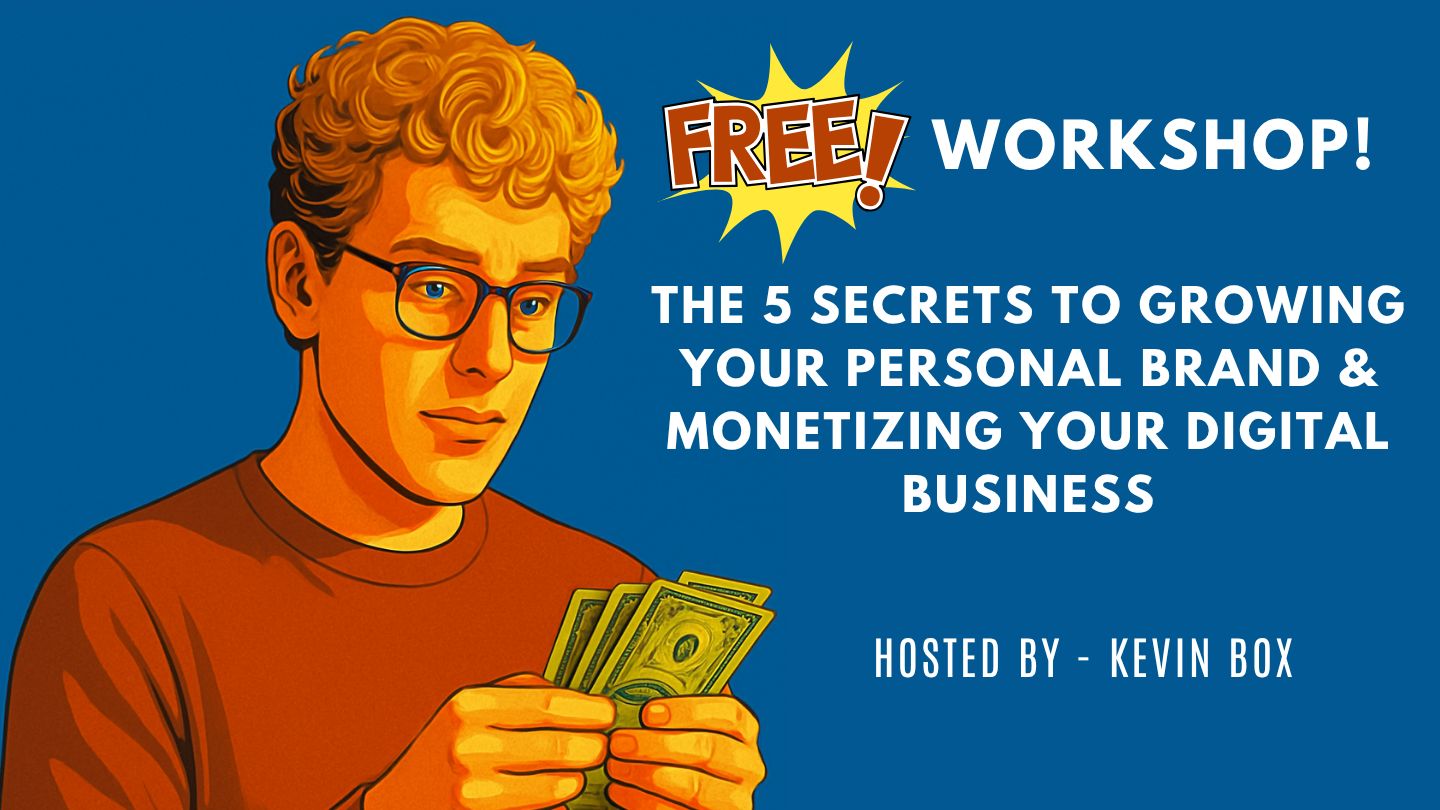- Kevin's Newsletter
- Posts
- 360 Brew & The LinkedIn Algorithm Reset
360 Brew & The LinkedIn Algorithm Reset
What Really Changed and What You Can Do to Win!

If your LinkedIn reach has suddenly fallen off a cliff, you're not imagining things. You're experiencing the largest algorithmic reshuffle since 2019—and it's being driven by something most creators don't even know exists yet.
LinkedIn replaced thousands of specialized ranking models with one massive AI system called 360Brew, a 150-billion parameter language model trained specifically on professional network data Authoredup. This isn't a tweak to the old system. It's a complete rewrite of how LinkedIn decides what you see.
Recent analysis of over 621,000 LinkedIn posts Authoredup reveals exactly what these changes mean for your content. The picture is both surprising and genuinely exciting. The game has changed. Not in small ways. In massive, counterintuitive ways that most creators haven't figured out yet. But once you do, you'll have a serious advantage.
If you want to protect your authority, your revenue, and your audience growth this year, you need to understand what's actually happening beneath the surface. Because the creators who adapt to these shifts aren't just surviving—they're thriving.
When "Down" Means Different
Let's start with the numbers, because they tell an important story. Between February and September 2025, reach dropped 47%. Engagement fell 39%. Follower growth declined 42%. That post you wrote last year that earned 10,000 impressions. Today, it gets 3,400. Maybe 3,600 if you're lucky.
Four forces converged to create this shift. First, there's simply more content—20% more daily posts flooding the feed. Second, LinkedIn is giving more inventory to "Suggested" content and sponsored posts. Third, the algorithm shifted hard toward quality signals like comments, saves, and dwell time. And fourth, audiences are more selective about what they engage with.
Here's what that actually means: visibility is no longer automatic, which is good news if you're willing to be intentional. You must earn attention with every single post—and the creators who do are seeing results that blow away the old numbers. The days of coasting on momentum are over, but the days of standing out through quality have just begun.
The Flashy Stuff Made Room for the Meaningful
Video reach dropped 35%. Video engagement fell 23%. But here's the thing—video isn't dead. It's just being held to a higher standard now. LinkedIn no longer rewards creators who post it without intention, without narrative depth, without something worth watching. And that means the creators who do put in that work are getting rewarded more than ever.
Polls are even more interesting. Reach actually went up by 9%, which sounds great until you look at engagement: down nearly 70%. People click on polls because they're easy. But they don't care. They don't remember. They scroll past and forget you existed.
So what's working? Document posts saw engagement jump 46%. Why? Because carousels generate long dwell time, and dwell time is LinkedIn's favorite signal right now. Articles and newsletters? Reach climbed nearly 48%. LinkedIn is pushing authority-driven long-form content again, the kind of content that teaches something real.
The algorithm is shifting from attention capture to attention duration. If you're teaching, you're winning.
The Follower Advantage (It's Not What You Think)
Here's where things get truly interesting. More followers doesn't automatically mean less reach—it means you need to actually engage those followers. Accounts with fewer than 5,000 followers saw reach drop 78%. But accounts with 50,000+ followers? Also down 62%. The sweet spot right now is 15,000 to 25,000 followers, where reach only fell 43%.
Why? Because LinkedIn stopped ranking creators based on audience size and started ranking them based on relationship density. A highly engaged, niche audience beats a massive passive one every single time. This is actually empowering—you don't need a huge following to win. You need the right following.
If your followers engage, LinkedIn rewards you disproportionately. Build that engagement, and you'll outperform accounts ten times your size.
LinkedIn Is Now an Interest Network (And That's Your Opportunity)
This is the shift that changes everything. LinkedIn is no longer a social network. It's an interest network. The algorithm doesn't care who you know. It cares what you show interest in. It's building topic fingerprints from your behavior, grouping you into interest clusters, and running distribution tests to see if you're relevant.
This is why consistency is now your superpower—it's how the algorithm learns where to place you. If LinkedIn can categorize you clearly, it can distribute you powerfully. You become visible not just to your followers, but to everyone in your interest cluster. That's exponential reach, and it's available to anyone who commits to a niche.
Saves and Comments Are Your New Growth Engine
A saved post is 60% more likely to get pushed into "Suggested for You" feeds. Think about that. When someone saves your post, LinkedIn interprets that as a signal of real value—not just fleeting interest. Documents, external links, and long-form teaching posts generate the most saves. Create content worth saving, and the algorithm does the heavy lifting for you.
Comments drive everything too, but not all comments are equal. The best ones follow what I call the A3 Model: Add value, Ask a question, Anchor the conversation. Or they're mini-case replies—120-word micro case studies that extend the original post. Or bridge comments, where you tag peers with specific context to open new interest clusters.
And timing matters. The first 90 minutes decides 70% of your post's lifespan. Show up in that window, respond authentically, and build momentum. Do that consistently, and you'll outperform 90% of creators who treat posting like a broadcast channel.
AI Is Your Competitive Edge (When Used Right)
Creators who use AI for research, drafting, and structuring content are seeing 32% more engagement and 41% more comments. AI can absolutely be your competitive edge—if you use it right.
But creators who publish fully AI-generated content? They're getting relevance penalties, semantic-duplication detection, and "synthetic tone" downranking. The platform can tell. And it's not rewarding lazy shortcuts.
AI should support your thinking, not replace it. Use it to think faster, research deeper, and structure better. That's the line—and the creators who walk it are dominating.
Rhythm Is Your Compound Interest
The era of sporadic posting is over, and frankly, that's liberating. LinkedIn is now scoring your pattern, not just your post. Optimal cadence is two to three posts per week. Daily posting? It causes a 45% reach drop and accelerates audience fatigue. But hitting that two-to-three sweet spot consistently? That's where the magic happens.
Format discipline matters too. Creators who stick to a consistent format mix see 1.2 times less performance loss. And topic repetition builds authority. If you repeat two to three topics for 90 days, you'll see 27% higher average reach and 41% more topic-based follows.
LinkedIn rewards creators who show up with purpose, with structure, with rhythm. The platform is looking for patterns it can trust—and when it finds them, it amplifies them.
The 2025 LinkedIn Pre-Publish Checklist
Before you publish anything on LinkedIn in 2025, run through these seven questions:
1. Topic Consistency Does this post reinforce one of your two to three authority topics? If LinkedIn can categorize you clearly, it can distribute you powerfully.
2. Format Selection Does it use a winning format—document, article, or text with image? The meaningful formats are outperforming everything else.
3. Depth Over Virality Does it teach something practical that's worth saving? Attention duration beats attention capture every time.
4. Comment Engineering Do you have a question that triggers real conversation? Do you have a response plan for the first 90 minutes? That window decides 70% of your post's lifespan.
5. AI Usage Audit Is the tone human, specific, and story-driven? AI should support your thinking, not replace it.
6. Rhythm Alignment Does this fit your weekly cadence of two to three posts? Consistency compounds faster than volume ever could.
7. Relevance Test Will LinkedIn know exactly which interest cluster to send this to? Clarity equals distribution.
If you can answer yes to all seven, you're not just ready to publish—you're ready to win.
The truth is, LinkedIn didn't just change the rules. It changed what the game is. Visibility isn't about volume anymore. It's not about virality or follower counts or flashy formats. It's about understanding human behavior—what compels someone to stop, read, save, and share. It's about patience. It's about building something that lasts longer than 90 minutes in a feed.
And here's the real opportunity: most creators won't adapt. They'll keep doing what worked last year. They'll complain about the algorithm. They'll give up.
The creators who figure this out won't just survive the reset. They'll dominate it. And there's never been a better time to be one of them.

Spots are limited! Register Today!!
Free LinkedIn Growth Workshop
📌 I'm hosting a free 1.5-hour workshop on December 6th at 9:30 AM Central Standard Time on the 5 Secrets to Growing Your Personal Brand and Monetizing your Digital Business.
Everyone who signs up and attends will receive my Visual Carousels Masterclass free for attending.
𝗖𝗹𝗶𝗰𝗸 𝗵𝗲𝗿𝗲 𝘁𝗼 𝗿𝗲𝗴𝗶𝘀𝘁𝗲𝗿 𝗳𝗼𝗿 𝘁𝗵𝗲 𝘄𝗼𝗿𝗸𝘀𝗵𝗼𝗽:
https://lnkd.in/eU5bMy2M
Reply